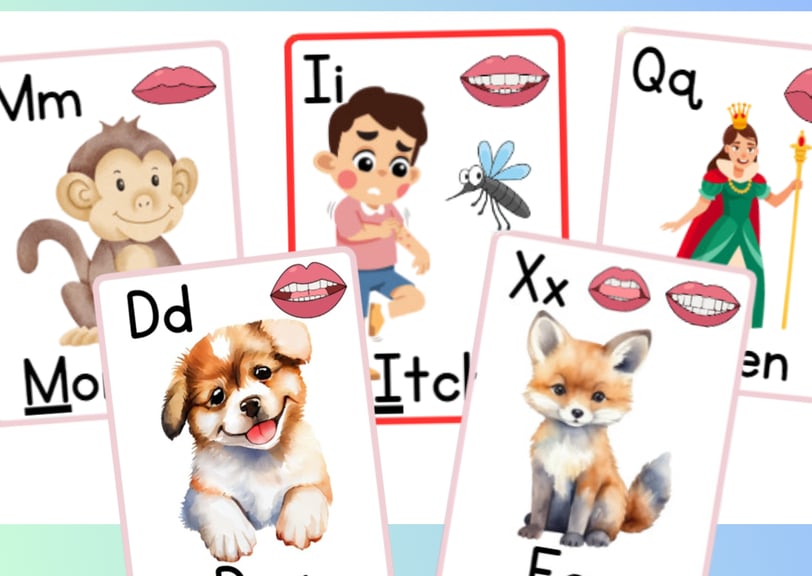Flashcards for Teaching Letter Sounds
Download free flashcards to help you teach your child the letter sounds.
4/8/20242 min read


Flashcards for Teaching Your Child the Alphabet
Teaching your child the alphabet is an essential step in their early education. One method to help them learn the alphabet at home is by using flashcards. Flashcards are a versatile and interactive tool that can make the learning process enjoyable for your child. Let's discuss helpful tips on how to use flashcards to teach your child the sounds each letter makes and the mouth position needed to produce each letter sound.
1. Introduce the Alphabet
Before diving into the letter sounds, it's important to introduce the alphabet to your child. Start by showing them the flashcards one by one. I personally, don't recommend teaching the alphabet in ABC order. I recommend teaching it based on these patterns: Short vowel sounds first (as they are the most common), Letter names that begin with the sound (b, d, j, k, p, q, t, v, z), letter names that end with the sound (f, l, m, n, r, s, x), Name overlaps with another letter (c (s), g (j)), letter name does not have the sound (h, w, y). Encourage your child to repeat the name of each letter after you. This will help them become familiar with the alphabet.
2. Teach the Sounds
As you teach your child to recognize the letters, teach them the sound each letter makes (same order as mentioned above). I recommend teaching the letter name and it's corresponding sound together. Work on only 1-2 letters a day. As you add new letters, I recommend reviewing the previously learned letters. Put more focus on mastering the letter sound than you do the letter name.
Repetition is key when teaching letter sounds. Make sure to go through the flashcards multiple times, allowing your child to practice saying the sounds along with you. You can also incorporate fun activities, such as playing a matching game with the flashcards (having your child match the flashcard to an object or to a sound you produce), to make the learning process more engaging.
3. Teach Mouth Positions
In addition to learning the sounds, it's important for your child to understand the mouth positions needed to produce each letter sound. This will help them articulate the sounds correctly. As you go through the flashcards, demonstrate the proper mouth position for each letter sound. For example, for the letter 'M', show your child how to press their lips together to make the "/m/" sound. Use the pictures on each flashcard to help you teach the mouth positions.
Encourage your child to imitate the mouth positions as they say the sounds. You can also use mirrors to allow them to see their own mouth movements and compare them to yours. This visual feedback can be helpful in reinforcing the correct mouth positions.
Remember to make the learning process fun and interactive. Incorporate games, songs, and other activities to keep your child engaged and motivated. With consistent practice and the use of flashcards, your child will soon become familiar with the alphabet, its sounds, and the mouth positions needed to produce each letter sound.
By using flashcards, you can make learning the alphabet an enjoyable experience for your child while helping them develop important language skills.
